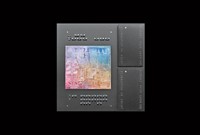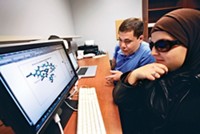Advertisement
Grab your lab coat. Let's get started
Welcome!
Welcome!
Create an account below to get 6 C&EN articles per month, receive newsletters and more - all free.
It seems this is your first time logging in online. Please enter the following information to continue.
As an ACS member you automatically get access to this site. All we need is few more details to create your reading experience.
Not you? Sign in with a different account.
Not you? Sign in with a different account.
ERROR 1
ERROR 1
ERROR 2
ERROR 2
ERROR 2
ERROR 2
ERROR 2
Password and Confirm password must match.
If you have an ACS member number, please enter it here so we can link this account to your membership. (optional)
ERROR 2
ACS values your privacy. By submitting your information, you are gaining access to C&EN and subscribing to our weekly newsletter. We use the information you provide to make your reading experience better, and we will never sell your data to third party members.
Education
Teaching chemistry students to use the labs of the future
Educators want to prepare chemists for a time when autonomous machines will do the work
by Sam Lemonick
December 2, 2018
| A version of this story appeared in
Volume 96, Issue 48

Laboratory science is changing. Advances in robotics and computers are making it increasingly possible for researchers to delegate some of their work to machines. A successful chemistry career may soon require skills that aren’t always taught today.
“[Students] see the writing on the wall,” Purdue University’s Garth Simpson says. The challenge for educators, says Simpson, who uses artificial intelligence in his analytical chemistry research, is keeping up with how quickly the field is moving.
He and other professors are doing what they can to prepare the students in their classes and research groups. They’ve developed lessons to teach students how to design and build automated lab equipment, as well as autonomous devices that learn from the data they collect. Underlining the rapid advances in lab equipment, at least one university will soon offer a master’s degree in automated science. If automation is the future of chemistry labs, teaching students programming and robotics may be the future of chemistry education.
When he started teaching at Monmouth University, a primarily undergraduate institution in New Jersey, physical chemist Dmytro Kosenkov wanted to shake things up. While developing labs for a physical chemistry class in 2012, he chafed at repeating the traditional kinetics and spectroscopy experiments in the same old way. That’s when he thought of having students design and build automated instruments.
One device he had them build, an automatic titrator, is detailed in a 2015 paper that Kosenkov published (J. Chem. Educ., DOI: 10.1021/acs.jchemed.5b00494). To make the automatic, internet-connected titrators, the students used off-the-shelf pH probes and other equipment. The students programmed the devices to carry out an acid-base titration and created a web interface that lets the students interact remotely with the machines and the data they collect.
Kosenkov says he’s been impressed by how enthusiastic some students are about the project. He thinks they appreciate having a chance to design and build an experiment almost from the ground up rather than just following instructions to use existing equipment. But he’s seen them struggle with the programming components of the project. He views that lack of familiarity as a failing of current chemistry curricula. “All chemistry majors should have programming [training],” Kosenkov says.

Other professors are seeing the same problem. As a professor at Harvard University in 2017, Alán Aspuru-Guzik got interested in teaching a computer science course for chemists. He modeled his course, Physical Science 50 (PHYSCI 50), on Harvard’s popular introductory computer science course, CS 50.
Aspuru-Guzik says he realized chemists needed better training when he discovered that fourth-year graduate students in another class he was teaching, on quantum chemistry, didn’t know the programming language Python, which has become popular in scientific computing.

Now at the University of Toronto, Aspuru-Guzik intends to soon offer a similar course there. In PHYSCI 50, he taught students not only Python but also data science, Monte Carlo simulation methods, and machine learning. He says students were enthusiastic about the class in their evaluations after the semester concluded. Aspuru-Guzik thinks they can see from the so-called internet of things that labs of the future will feature equipment connected to and controlled from the web. And on top of preparing chemists for the way science will be done in the future, he sees the course as a way to attract talented students and keep them engaged. “Some of the best chemistry kids want to work in automated chemistry,” Aspuru-Guzik says.
Advertisement
The students’ final project for PHYSCI 50 was similar to what Kosenkov devised: building a robotic titrator. One difference between Kosenkov’s titrator and Aspuru-Guzik’s machine is that the latter runs on ChemOS, free software Aspuru-Guzik supervised development of that has machine-learning capabilities. Robots running ChemOS can learn from each experiment and plan new ones to test a scientist’s hypothesis. Loïc Roch, a postdoctoral student in Aspuru-Guzik’s lab who wrote ChemOS, says chemistry students need to learn basic programming skills. “I didn’t have any of this” until graduate school, Roch says. Kosenkov hopes to introduce autonomous tools into his classes too. He’s taking a sabbatical at Princeton University in 2019 to learn more about a type of machine learning called deep learning.
Purdue’s Simpson believes educators should focus on teaching students how to program devices with machine-learning algorithms rather than simply automating equipment. Automated equipment can carry out a prescribed operation without human help, while an autonomous machine-learning algorithm can decide, using large data sets it collects, which steps to take next. Simpson starts students with data-science skills, teaching them how to think about and use large data sets. Last year, he included a unit in his lesson plans on neural networks, a kind of artificial intelligence.
Casey Smith, a fourth-year graduate student in Simpson’s group, says the class, which also includes the basics of programming, helps students learn to deal with the wealth of data that many experiments generate these days. Smith says he was introduced to neural networks as an undergraduate, but not in the classroom. He first learned about them when watching a neural network learn how to play the game Mario Kart on the video-streaming site Twitch. Like Roch, Smith thinks chemists should be learning to program as undergraduates. He also thinks undergraduates would benefit from learning more statistics at that level to help them parse and process the large data sets that come with modern chemistry.
Some educators are thinking about an even more in-depth approach to teaching the skills of autonomous science. Carnegie Mellon University announced in October it would offer a master of science in automated science starting next year. Computational biologist Robert F. Murphy, one of the program’s codirectors, says, “Biologists and chemists don’t get taught the nuts and bolts of automated instrumentation.” The university plans to focus on biology the first year and is considering adding chemistry as another concentration.
Murphy says the hope is to teach students to build “self-driving lab instruments.” He says there’s a direct analogy to self-driving cars—something CMU researchers have been helping develop since the 1980s. Courses will include hands-on training about how automated instruments work, as well as the statistics and programming skills needed to build predictive machine-learning models and, eventually, autonomous lab equipment. Students at CMU will finish with a capstone project working in collaboration with a company or potentially an academic researcher to put what they’ve learned into practice.
Simpson says collaboration with industry—where automated and some autonomous equipment is already in use—has been an important aspect of teaching automation skills to Purdue students. Shijie Zhang, a former student in Simpson’s lab, says he relies on what he learned at Purdue in his current job, doing chemometric data analysis for Takeda Pharmaceutical. And Zhang says he’s grateful for the math and statistics he learned in Simpson’s class, especially when he encounters people who don’t seem to understand the chemometric software tools they’re using beyond knowing which buttons to click.
These educators believe teaching students to build and operate robotic lab equipment will help prepare them for success in chemistry. But chemistry’s continued progress may depend on those teachers’ success as well. Many chemists see machine learning and other tools as a critical part of future advances. Aspuru-Guzik says, “We are not going to succeed at automated chemistry if we do not have automation education.”





Join the conversation
Contact the reporter
Submit a Letter to the Editor for publication
Engage with us on Twitter